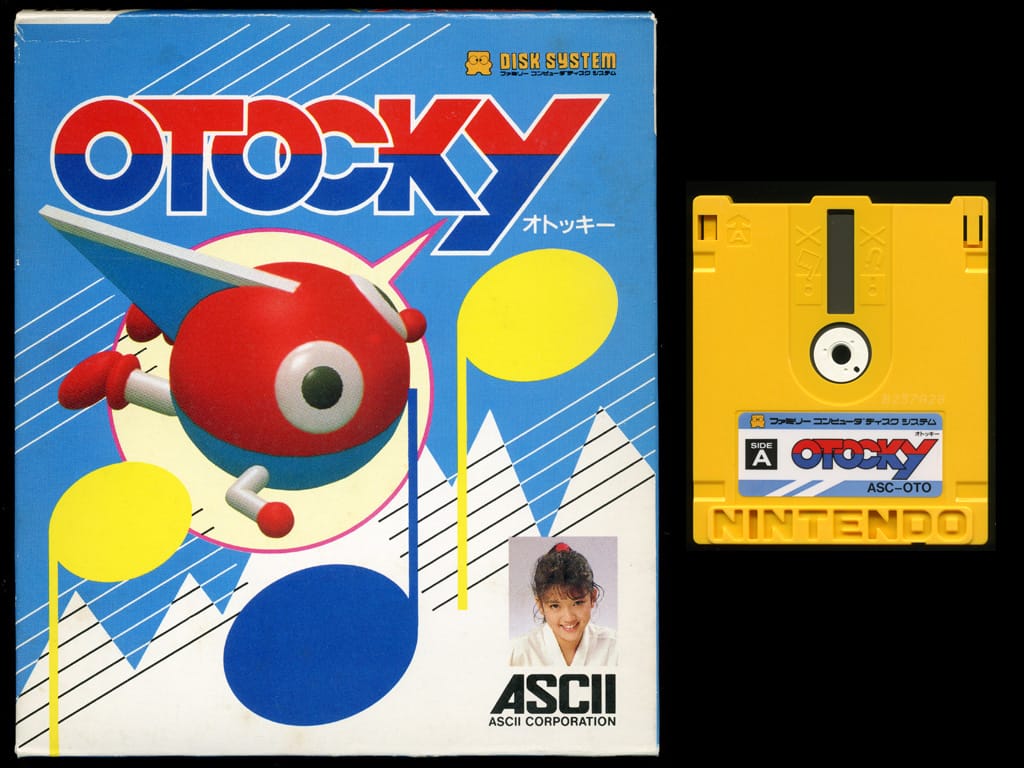Toshio Iwai's journey from Sound Fantasy to Electroplankton
We profile the artist behind two of Nintendo's attempts at making experimental music games -- one a canceled Super Famicom game based on musical insects, and the other a Nintendo DS cult-favorite based on electronic plankton.
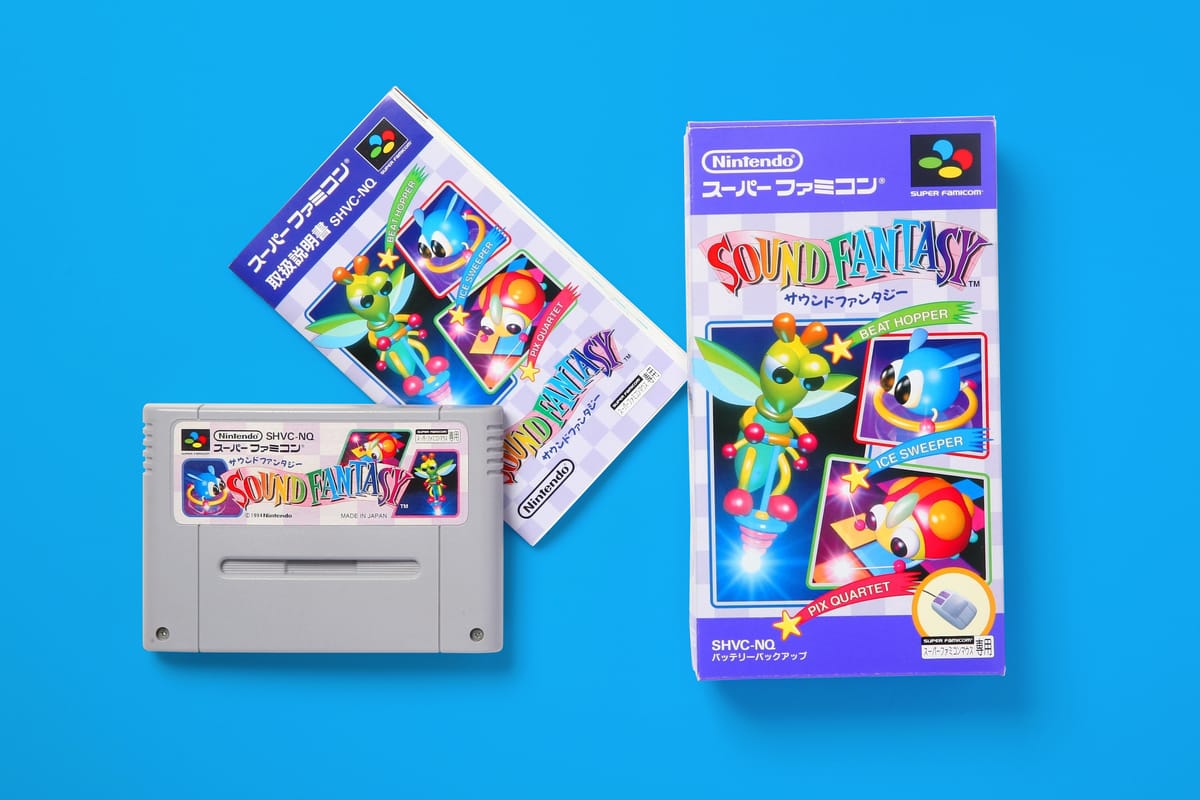
A year into his studies at the University of Tsukuba in the early ’80s, a young Toshio Iwai began experimenting with film animation. As he sat, watching films and slowly crafting his own animation, he was struck by a profound comparison to one of his earliest childhood obsessions: the flipbook.
“I realized that making animation is expensive and takes a very long time,” Iwai says. “I remembered that making flipbooks was so easy and instant. [...] I could hold the flipbook in my hand. I could control the speed of the animation. It had a weight and a kind of tactile sensation because of the paper. And I thought, ‘Oh, this is a much more rich experience than just sitting on a chair and watching a screen.’”
Iwai’s fascination with movement and interactivity grew as he worked toward his master’s degree in plastic art and mixed media. As he researched bygone animation devices like the zoetrope and phenakistiscope, he found time to fiddle with the mechanics of popular arcade games and personal computers. Inspired by both, Iwai’s Time Stratum installation — which used a strobing TV monitor to illuminate a spinning cylinder of printed eyes and hands — claimed the top prize at 1985’s High Technology Art Exhibition, making him the youngest winner in the contest’s history.
In 1987, his final year at the University of Tsukuba, Iwai hatched a plan with a notable Tsukuba alumni to design a video game. The result, the Famicom Disk System musical shoot-‘em-up Otocky, didn’t make waves in the gaming world, but Iwai was undeterred. He would go on to partner with Nintendo for two of the biggest projects of his career.
When I reached out about an interview for this story, I asked for an hour of his time. Iwai, now in his early 60s, wrote back: “Maybe an hour will be short for the interview.” And he was right. For nearly three hours, we chatted about his experiences with art and games, and his turbulent relationship with Nintendo.
Bugs & the Bay
San Francisco’s Exploratorium museum of science, technology, and art was founded in 1969 by particle physicist Frank Oppenheimer. Best known for working under his brother Robert on the controversial Manhattan Project, Oppenheimer established an artist-in-residence program for the museum in 1974 to showcase artists from different backgrounds and provide the Exploratorium with unique installations.
In 1987, two years after Oppenheimer’s passing, Sony founders Masaru Ibuka and Akio Morita visited the Exploratorium while visiting San Francisco. Impressed by the museum’s vast array of hands-on exhibits, the Japanese tech giants struck a deal to bring a temporary Exploratorium exhibition to Tokyo in 1989. It was there, at an opening party, that the up-and-coming artist Iwai wowed the Exploratorium staff with his portfolio.
After an initial two-week visit and a presentation to the higher-ups in 1990, Iwai was officially accepted as the Exploratorium’s next artist-in-residence. While he had visited various other foreign countries in his travels, he would be away from his friends and family in Japan for longer than ever before.
“It was a great time. Everything [was] very new and exciting,” Iwai says. “I got a driver's license in California. I made a bank account. I studied English in Chinatown. And the big thing was I had to learn about inches and feet because we used metric.” Iwai shakes his head. “It was the most difficult part. Harder than getting a driving license,” he laughs.
During his eight-month stay, Iwai focused on crafting two installments. The first, dubbed Well of Lights, featured rotating screens of plastic, each illuminated in sections to show the movement of their various nature-themed imagery. The second was an interactive piece of art titled Music Insects — built using software Iwai had programmed using his Amiga computer. As the name suggests, the installment put museum patrons in control of various bugs, each with their own instrument-inspired cries.
“There was a TV monitor and a trackball,” Iwai says. “You could use the trackball to draw lines and dots on the screen and there was a color palette on the bottom. So it was like drawing software. But the difference between normal drawing software was there were four bugs walking on the screen and when a bug met the color dots, which you had drawn on the screen, they played a sound. Gradually, those four bugs met a lot of colors and they started to make many sounds.”
His time as an artist-in-residence at the Exploratorium completed, Iwai returned to Japan in 1992. Not long after his arrival, he reconnected with the University of Tsukuba alum who helped him build Otocky years earlier. The friend, who had made great strides in the gaming industry since 1987, was producer Tsunekazu Ishihara. Ishihara, who has since become The Pokémon Company’s president and CEO, and is known for his work on games including Picross and EarthBound, found Iwai’s Music Insects an intriguing bit of software, one he felt could work well with Nintendo’s newest accessory.
Before working with Nintendo directly, Iwai made a Famicom Disk System rhythm game called Otocky -- which ended up featuring a future adult film actress on its cover, to Iwai's surprise.
Sound check
Launched for the Super Nintendo (Super Famicom in Japan) in the summer of 1992, Mario Paint was a graphics editor, animation program, music composer, and minigame collection rolled into one. Fitting with its point-and-click interface, the game was bundled in a large box that included a specialty mouse and mouse pad. Upon release, the game was lauded for its various creative options and simple interface. But like with so many Nintendo accessories before — the Super Scope, R.O.B. the Robot, the Power Glove, and more — Nintendo didn’t have many games that could utilize the swanky peripheral.
Out of 132 Super Famicom games compatible with the mouse, only 40 would make it outside of Japan, and only two would require the accessory for gameplay. At the time of Iwai’s return to Japan, the second of those, Mario & Wario, was in the works. Developed by Game Freak under the direction of future Pokémon creator Satoshi Tajiri, Mario & Wario put players in control of Wanda, a helpful fairy tasked with guiding a temporarily-blinded Mario across dangerous environments. The game was produced by Tsunekazu Ishihara.
“When I met with [Ishihara] and showed him my Music Insects, which I created in San Francisco, he immediately thought it was a great idea for the mouse system on Super Nintendo,” Iwai says. “So Ishihara and I visited Kyoto to meet the Nintendo people and to make a presentation of my ideas — this was the first time I met Gunpei Yokoi — and they liked my ideas.”
While Nintendo’s higher-ups thought Music Insects would be a wonderful fit for the mouse, they also worried the core concept wasn’t enough of a draw for the average player. They were convinced the software couldn’t stand alone. “Creating something with the Super Famicom and the mouse, I thought maybe I could make more of a creative tool, but the result was the Nintendo people telling me, ‘We want to sell games, create games, and users want to play just games.’ and so on. I had a big dilemma between their opinions and my ideas,” says Iwai.
Despite his reservations about gamifying his melodious critters, Iwai was convinced he could make something unique and memorable with the help of Ishihara and Yokoi. With Iwai taking on dual roles as director and head designer, Sound Fantasy (initially conceived under the title Sound Factory) was officially in development.
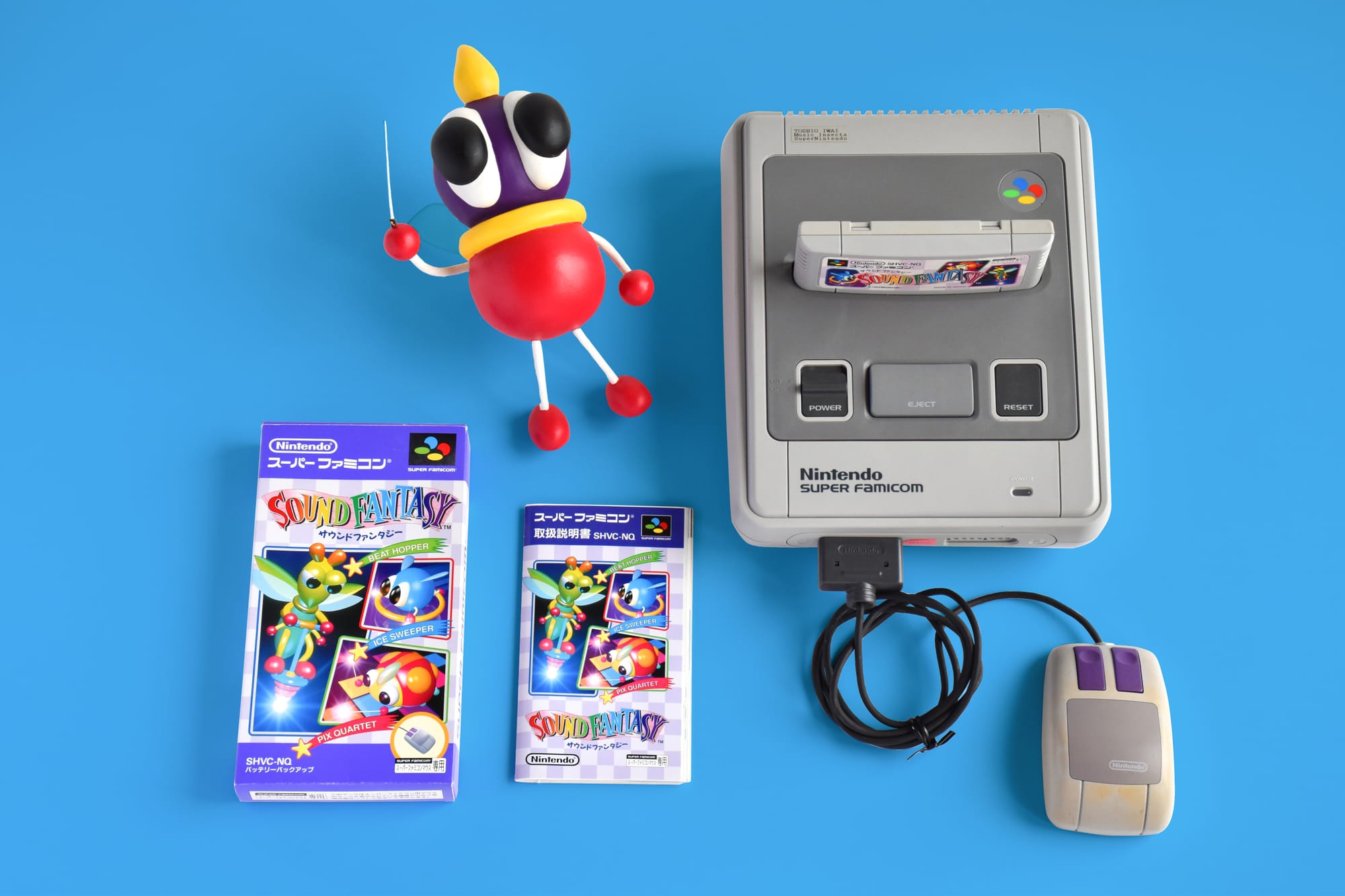

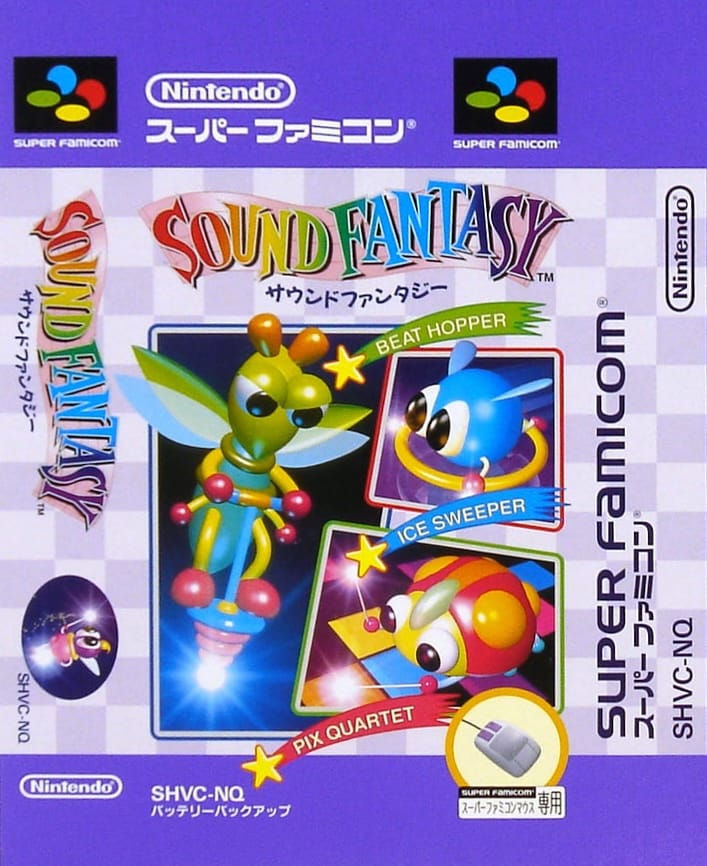

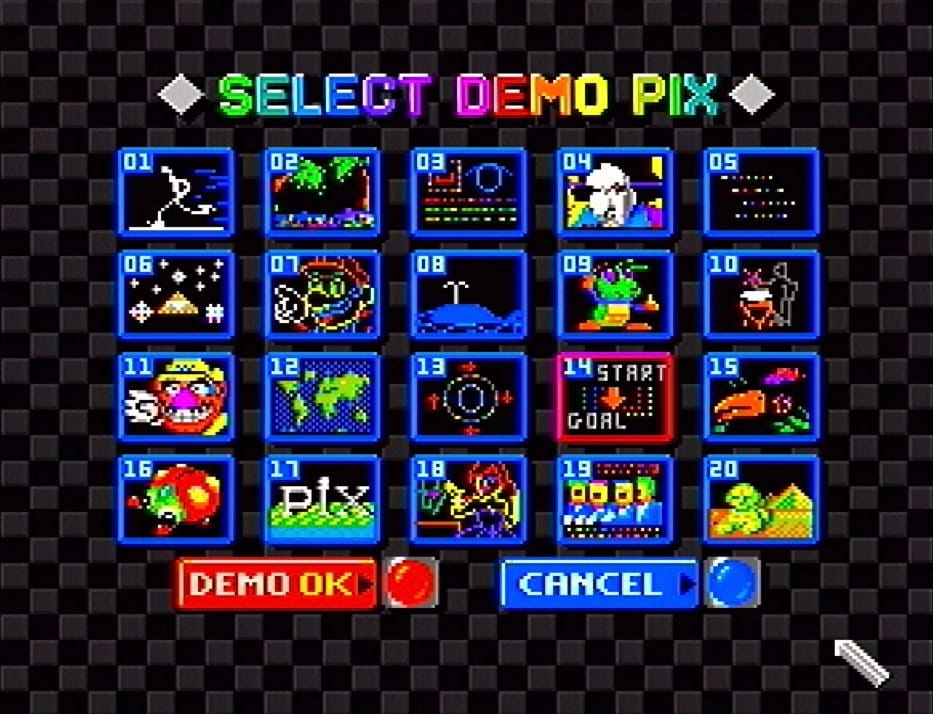

Sound Fantasy's four modes all took distinct approaches, connected by the game's cast of insects. | Images: Toshio Iwai, Jonathan Castillo, Nintendo
Gaming the system
Much like Mario Paint had, Iwai hoped to give Sound Fantasy a variety of modes. The main attraction, of course, was a 16-bit version of Music Insects, which had been rebranded as Pix Quartet. The mode gave players more control over their army of creepy crawlies, allowing them to craft intricate musical outputs using 16 different insects/instruments (though still only four at a time), 15 different colors, and a handful of tools. The game even included demos in the form of pixel artwork featuring Mario, Wario, the Triforce from Nintendo's The Legend of Zelda series, and more.
Sound Fantasy’s second mode, Iwai’s attempt at satisfying Nintendo’s request for a competitive game, was Beat Hopper. Featuring a grasshopper on a pogo stick, Beat Hopper let players leap on panels of varying sizes to concoct their own musical scores. By giving the panels point values and allowing for the possibility of falling into the surrounding void with a misplaced bounce, Iwai found he could incorporate skill and high scores.
Iwai’s final idea was for another form of creative software that he titled Star Fly. “You could place stars in the night sky and compose a simple melody like a music box,” Iwai says. Unsurprisingly, Star Fly starred a lightning bug, one that could place stars at varying heights and distances to produce different pitches. It was another simple mode that allowed players all the time and freedom they needed to play in the (literal) space provided.
Iwai provided four gameplay videos from Sound Fantasy for this story -- one of which you can watch here, while the other three are available on our YouTube channel.
To Iwai’s dismay, after he added these additional modes, Nintendo still felt Sound Fantasy wasn’t enough of a “game” to attract the average Super Famicom owner. So a fourth mode, a Breakout clone called Ice Sweeper, was shoehorned into the lineup.
“This was not my idea,” Iwai says. “Nintendo told us just the one game [Beat Hopper] was not enough. I was really disappointed in this direction. The mouse and the Super Famicom were a great combination for making a creative tool for everyone. But unfortunately, Nintendo forced us to add games. Of course, Nintendo had the biggest [influence] over this project because it was Nintendo’s game.” Not only was Ice Sweeper in — Nintendo decided to demote Star Fly to a hidden mode that players would need to unlock.
With Sound Fantasy far into development, Iwai stepped away from the project to begin another artist-in-residence program, this time at the ZKM Center for Art and Media in Karlsruhe, Germany. “I was still communicating with Tsunekazu Ishihara about the facts by letters and so on,” Iwai says. “It was before the internet, so it was kind of difficult.”

Kill the noise
As Iwai worked on new art installations at the ZKM, the world of video games began a rapid shift into the realm of 3D graphics. During a three-week stretch at the end of 1994 in Japan, Sega released the Saturn alongside Virtua Fighter, Sony released the PlayStation alongside Ridge Racer, and Nintendo released its faux-3D, pre-rendered platformer Super Donkey Kong (Donkey Kong Country in the West) for Super Famicom. Each became a sensation, driving consumer taste for more visually advanced offerings.
“We were about to release Sound Fantasy. We had finished the software. Nintendo's team finished [the] package and the promotion video. But, suddenly Ishihara told me that, unfortunately, they terminated the project. That's all. I was really, really upset and disappointed,” Iwai says. “I have heard some rumors — I don’t know if they’re true or not — but Ishihara told me that Nintendo almost stopped all projects which were not using the pre-rendered images. It was terrible, but they wanted to compete with the new game consoles, I think.”
Little did Iwai know that around the time Sound Fantasy was being shuttered by Nintendo, another group of developers was falling in love with his work. It turned out team members from Maxis, famous for the Sim series, had taken a trip to the Exploratorium and had also become enamored with Music Insects.
“They asked me if I was interested in making something on the PC for kids,” Iwai says. “But I had a bad experience with Nintendo, so I was a bit careful working with another company.” Iwai says Nintendo wasn’t concerned with his noisy bugs making the jump to home computers. “I had a contract with Nintendo, but they said, ‘You are making software on the PC, so it’s different.’ Nintendo was just thinking about game consoles [...] and maybe arcade games. PC culture was out of their business. So I started to work with Maxis.”
Unlike Nintendo, Maxis was happy to let Iwai build this iteration of Music Insects into a fully-formed creative tool. Iwai’s focus soon shifted to the issue of balance. Just because he could add dozens of new features didn’t mean he should, and he wanted to provide young players with options but didn’t want to leave them overwhelmed. “I always have the feeling that it’s very difficult to determine a balance between creativity and games, simpleness and complicated things,” he says.
Four years after he left the Exploratorium and two years after the cancellation of Sound Fantasy, the colorful and boisterous SimTunes made its debut. Though he was still saddened by the concept’s leap from console to PC, Iwai was happy the game had found a home. The game wasn’t a top seller for Maxis, but it received its share of praise.
“SimTunes adds a delightful new face to the world of music,” reads an archived review from the educational website Super Kids. “It is not meant to teach serious music notation nor is it an instrument tutorial. It combines music, art and fun, and the result is dynamite!”
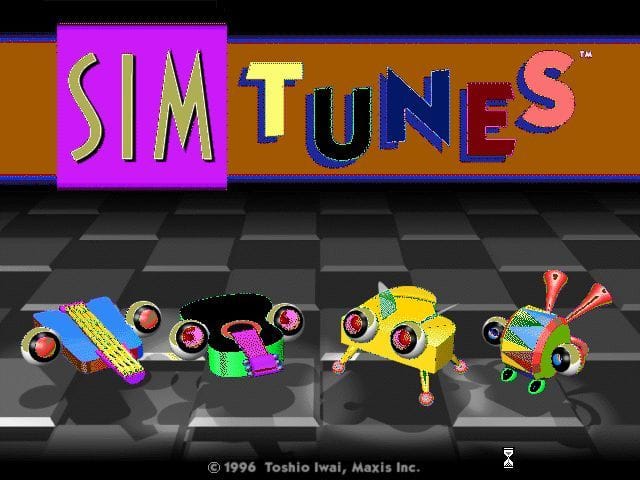
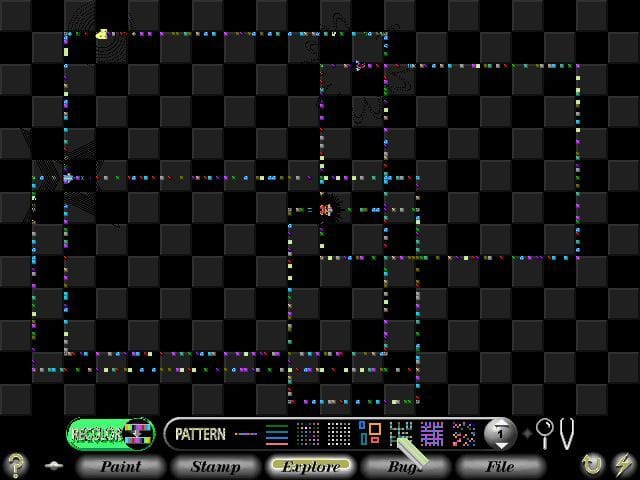
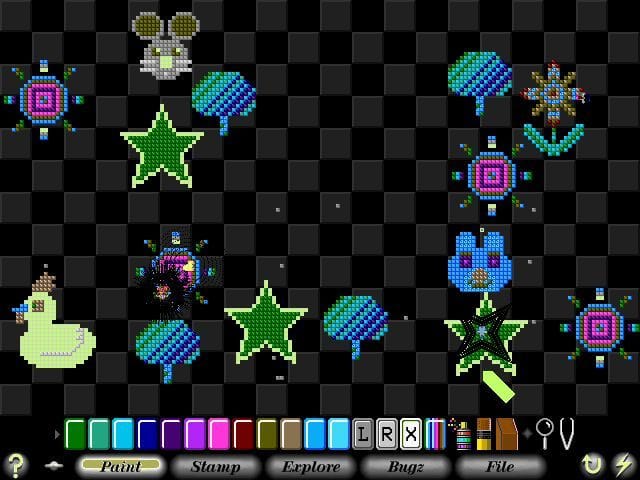
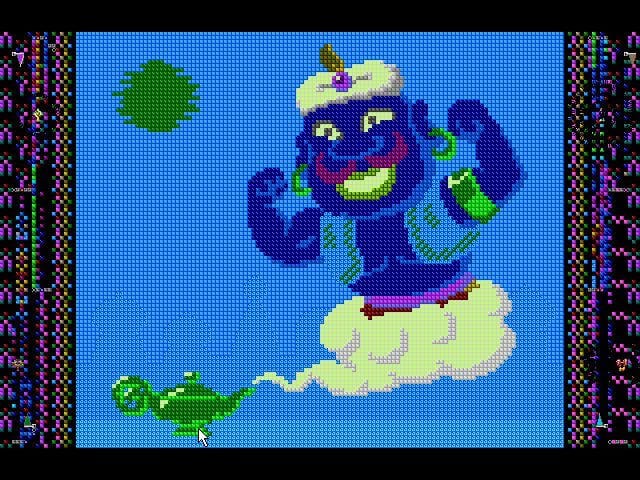
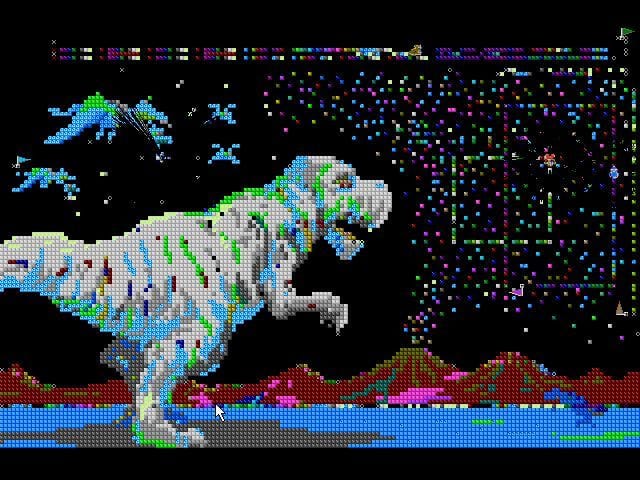
With SimTunes, Iwai was able to realize many of the ideas he originally developed for Sound Fantasy. | Images: Maxis, MobyGames
An artist’s touch
While Iwai may have lost his shot at publishing creative software for Nintendo in the mid-’90s, he says his time spent working with the Sound Fantasy team resulted in something far more meaningful: friends and supporters. Of these connections made at Nintendo, Iwai names three who showed the most interest in his work and ideas outside of the office: Gunpei Yokoi, Shigeru Miyamoto, and Satoru Iwata.
“We became friends and we communicated a lot,” Iwai says of Miyamoto and Iwata. “It was a very good moment. We had many good conversations. Miyamoto is a designer, but he also has a creative mind. He understood what I was doing. Miyamoto said he was always trying to create creative things at Nintendo, but it was quite difficult. Satoru Iwata was also a very good guy. He visited with Miyamoto to watch my installations and artworks in museums and galleries. Sometimes they sent a group of visitors from Nintendo.”
Even with these connections, Iwai was surprised when he received a phone call from Iwata (then president of Nintendo) years later. Iwata asked if they could meet in Iwai’s Tokyo studio to discuss a new project. “He started to [explain] that he was planning a new game console. A handheld with two screens, a touch panel, a microphone, and so on,” Iwai says. Iwata was describing the first iteration of the Nintendo DS. Iwai was conflicted. “It was interesting, but I had a bad feeling, bad memories about working with Nintendo.”
Iwata understood Iwai’s reluctance to realign himself with the company that had let him down a decade before. “He told me that he was thinking this new game console was not just for games,” Iwai says. “He said that the situation of the game industry had now become very complicated. He wanted to create a kind of new digital culture with this new game console for everyone. And he said, ‘I want to have your creation as a launch title on the Nintendo DS.’”
Iwai was adamant that if he was to work with Nintendo again they would need to give him creative freedom. The result was Electroplankton, an interactive music game featuring 10 different modes for players to experience. Much like in Sound Fantasy, each mode starred its own adorable character with its own specialized musical gameplay. In a bold move, Iwai decided to forgo any kind of save feature, forcing players to craft fresh compositions every time the game was booted up.
To promote the eclectic game’s launch in April of 2005, Nintendo held a week-long Electroplankton exhibit in Tokyo's Harajuku district. Alongside playing demos of the game, visitors could view Iwai’s prior installations, his childhood artwork, and even a variety of rare Sound Fantasy packaging and promotional items. The event was capped off by a public discussion between Iwai, Iwata, and Miyamoto, covering Electroplankton’s inspiration and creation. At the time, Electroplankton was the only Nintendo-produced game to feature its creator’s name front and center on the cover. And unlike his disappointment with Nintendo’s handling of Sound Fantasy, Iwai was pleased with how Electroplankton turned out.
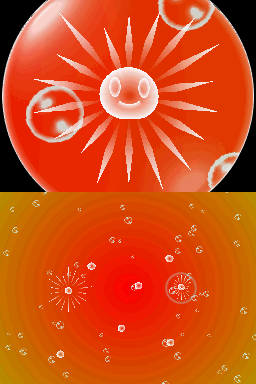


Electroplankton marked a full-circle moment for Iwai, as he was able to see his second Nintendo project through to the finish line. | Images: Nintendo, MobyGames
Sonic youth
In recent years, Iwai has become known for his children’s picture books, most famously The House with 100 Stories. The book, now a best-seller in Japan, has been translated into dozens of languages and has resulted in multiple spinoffs. Iwai’s museum exhibits, featuring his picture book illustration process, his childhood flipbooks, and many of his most famous installations, now attract a much younger audience.
“At first, I was a little bit worried about showing those old media art things because a long time has passed,” he says. “The situation of the digital world has totally changed. But after I opened my exhibition in a modern art museum in Japan, I found that even small children really loved my creations with the computers.”
When asked if he would ever consider a return to video games, Iwai says there’s always a possibility if he can find the right inspiration. “If I have a chance, maybe I should make something new for digital and analog, both. I’m always trying to make creations which touch on the basic sense of the human being, which everyone has.”
Along those lines, after I contacted Iwai for this story, he looked up a story I had written for Polygon on Panic’s Playdate — the small, yellow, portable console with a crank. A few days later, he followed up: “My friend showed me the Playdate and it was very well designed.” Once he started fiddling with Keita Takahashi’s Crankin's Time Travel Adventure, Iwai says he immediately understood the handheld’s potential, noting the game's similarity to classic animation. I connected Iwai with the folks at Panic, who were elated to hear he was a fan of their quirky handheld.
Toshio Iwai’s life was, and continues to be, a never-ending hodgepodge of creative endeavors. One would need a full novel to detail his wacky children’s TV show, his limited edition Wonderswan homebrew cartridges, and his work with the Studio Ghibli Museum on a detailed Totoro zoetrope. He is a man of many hats, and what lies beneath those hats — be it skyscrapers, flashing lights, or musical bugs — always seems to evolve.

